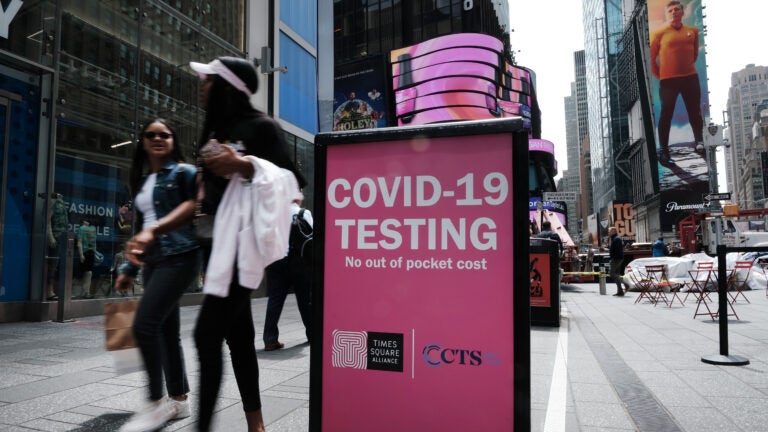Harvard economist on ‘The Costs of Long COVID’: ‘We should worry about it’
More than 1 million people could be out of the labor market at any given time, says David Cutler.

Even as some of the effects of COVID-19 on everyday lives are fading, the pandemic still has its grips on the economy, according to one Harvard economist.
Specifically, long COVID has the potential to have widespread and long-lasting effects on the economy, said David Cutler, a professor of economics at Harvard who focuses on health economics.
In a recent article titled “The Costs of Long COVID” for the JAMA Health Forum, Cutler expands on how the high number of people who will likely face some degree of long COVID symptoms will reduce overall health, affect the labor market, and drive up medical costs.
Cutler told Boston.com the article was an attempt to make sense of long COVID’s impacts, not present all the answers, because no one has the answers yet.
“Based on what the literature says, is this something we should worry about?” Cutler asked. “And unfortunately, the answer is that yes, we should worry about it. Because based on what we know so far, it affects a lot of people and the outcomes could be very severe.”
Cutler says he sees three different kinds of economic outcomes and effects from long COVID. The first is the health consequences.
“The health outcome does have economic costs because people like being healthy,” Cutler said. “The primary consequence of reduced health or a major consequence of reduced health is just simply that people want to be in better health.”
It is hard to estimate how many people have long COVID, but British population data suggests that 22% to 38% of people who are infected with COVID will have at least one COVID symptom 12 weeks after symptoms initially started, and 12% to 17% will have three or more symptoms, Cutler said.
Even on the lower-end estimate with only 12% of people having three symptoms 12 weeks after infection, that leaves about 9.8 million people with long COVID of the 82 million estimated cases in the United States.
Beyond the health consequences of long COVID, Cutler said it has implications on the labor market — the more people affected by long COVID, the less effective they are in the workforce.
Some people with long COVID may not be able to work as productively, or may have difficulty concentrating and get tired frequently, Cutler said. One survey from the COVID-19 Longhauler Advocacy Project found that 44% of people with long COVID were out of the labor force and 51% were able to work less hours.
An analysis from Brookings indicates that, at any given time, more than 1 million people could be out of the labor market due to long COVID, a labor supply loss that Cutler said would amount to more than $50 billion in lost income every year.
“This reduction in labor supply is a direct earning loss,” Cutler wrote. “People out of the workforce because of long COVID disproportionately worked in service jobs, including health care, social care, and retail. The widely noted shortage of workers in these sectors is driving up both wages and prices.”
This could be contributing to the recent surge in inflation, Cutler said.
People who are no longer able to work may also apply for Social Security Disability Insurance at higher rates, Cutler said. So far, he said, there has been no sustained increase in applications for disability insurance, but “it bears watching” as the pandemic continues.
The third economic consequence that Cutler sees evidence of is impacts on medical spending.
“People will spend more on medical care than they otherwise would and that’s something that we have a reasonable guess about because there are things [we can compare it to] … like chronic fatigue syndrome,” Cutler said.
If treatment costs are similar to treatment for chronic fatigue syndrome, estimated costs could be about $9,000 per person every year, Cutler said.
In October 2020, Cutler wrote a paper with his colleague Larry Summers that estimated the cost of COVID-19 to the U.S. would be about $16 trillion.
“That unfortunately looks to be about right,” Cutler said. “A reasonable part of that was long COVID costs.”
The high costs of dealing with long COVID reinforces the value of upfront investment to treat and prevent new infections, Cutler said.
“You could tell me that the cost of prevention and surveillance and so on is $100 million and I don’t care, compared to a couple trillion. You could tell me the cost is a billion dollars and I don’t care,” Cutler said. “The consequences are so big that almost no matter how much you spend on the prevention and the surveillance and stuff like that, you never get to a case where you don’t want to do it if it was at all effective.”